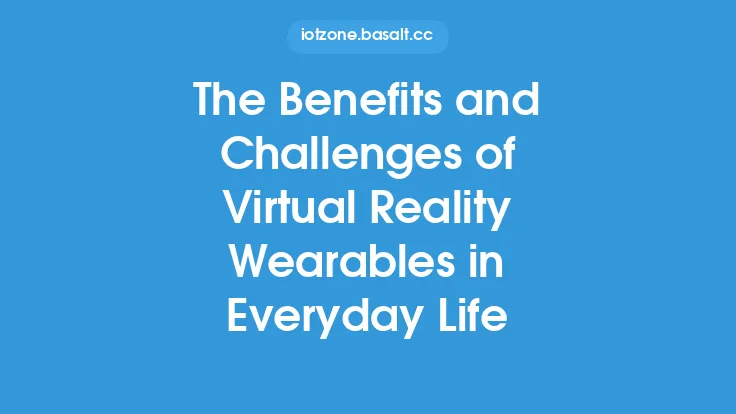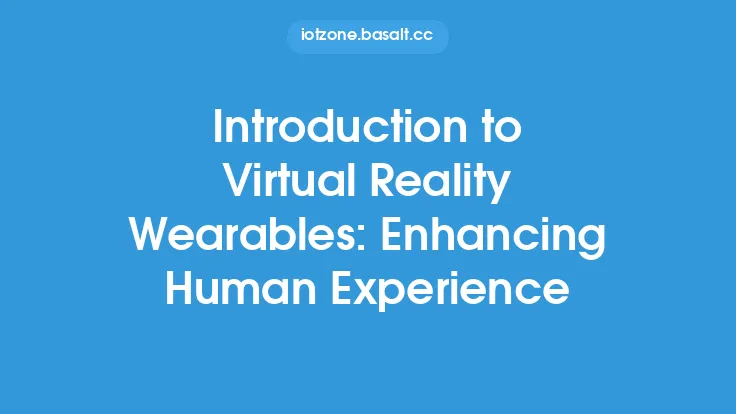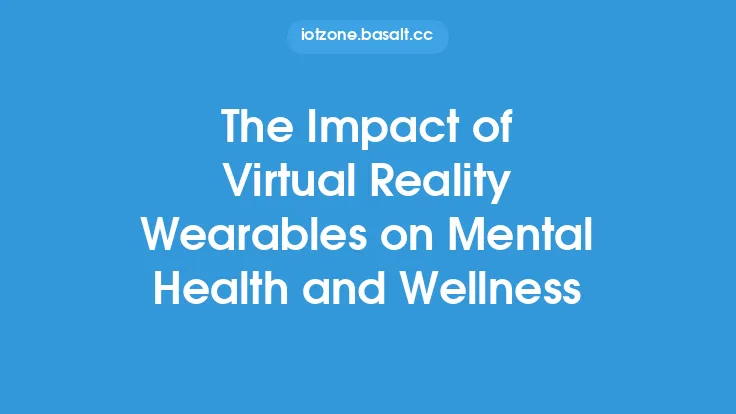The use of virtual reality (VR) wearables in business is becoming increasingly popular, and for good reason. These innovative devices have the potential to revolutionize the way companies operate, enhancing productivity and collaboration in a variety of ways. By providing immersive and interactive experiences, VR wearables can help businesses to improve training, enhance customer engagement, and increase employee satisfaction.
History of Virtual Reality Wearables in Business
The concept of using VR wearables in business is not new, but it has only been in recent years that the technology has advanced to the point where it is viable for widespread adoption. In the early days of VR, the equipment was bulky, expensive, and often required a significant amount of technical expertise to operate. However, with the development of more advanced and user-friendly devices, such as the Oculus Rift and the HTC Vive, VR wearables have become more accessible to businesses of all sizes. Today, companies such as Google, Microsoft, and Facebook are investing heavily in VR technology, and it is expected that the use of VR wearables in business will continue to grow in the coming years.
Benefits of Virtual Reality Wearables in Business
So, what are the benefits of using VR wearables in business? One of the most significant advantages is the ability to provide immersive and interactive training experiences. By using VR wearables, companies can simulate real-world scenarios, allowing employees to practice and learn new skills in a safe and controlled environment. This can be particularly useful for industries such as healthcare, aviation, and manufacturing, where training can be complex and high-stakes. Additionally, VR wearables can be used to enhance customer engagement, providing customers with interactive and immersive experiences that can help to build brand awareness and loyalty.
Technical Requirements for Virtual Reality Wearables in Business
In order to implement VR wearables in a business setting, there are several technical requirements that must be considered. First and foremost, companies will need to invest in the necessary hardware, including VR headsets, controllers, and sensors. They will also need to ensure that their computer systems are capable of handling the demands of VR technology, which can be significant. This may require upgrades to graphics cards, processors, and memory. Additionally, companies will need to consider the software requirements for VR wearables, including the development of custom applications and experiences.
Applications of Virtual Reality Wearables in Business
There are a wide range of applications for VR wearables in business, including training and education, customer engagement, and data visualization. For example, companies such as Walmart and UPS are using VR wearables to train employees on new skills, such as customer service and package handling. Other companies, such as car manufacturers and real estate agents, are using VR wearables to provide customers with interactive and immersive experiences, such as virtual test drives and property tours. Additionally, companies such as Google and Microsoft are using VR wearables to visualize complex data, such as 3D models and simulations.
Challenges and Limitations of Virtual Reality Wearables in Business
While VR wearables have the potential to revolutionize the way businesses operate, there are also several challenges and limitations that must be considered. One of the most significant challenges is the cost of implementation, which can be significant. Companies will need to invest in the necessary hardware and software, as well as provide training and support for employees. Additionally, there may be technical issues to overcome, such as ensuring that VR experiences are compatible with different devices and systems. Furthermore, companies will need to consider the potential health and safety risks associated with VR wearables, such as eye strain and motion sickness.
Best Practices for Implementing Virtual Reality Wearables in Business
In order to get the most out of VR wearables in a business setting, there are several best practices that companies should follow. First and foremost, companies should start by identifying specific business problems or opportunities that can be addressed through the use of VR wearables. They should then develop a clear plan for implementation, including the development of custom applications and experiences. Additionally, companies should provide training and support for employees, as well as ensure that the necessary technical infrastructure is in place. Finally, companies should continuously monitor and evaluate the effectiveness of VR wearables, making adjustments as needed to ensure that they are meeting their intended goals.
Future of Virtual Reality Wearables in Business
The future of VR wearables in business is exciting and full of potential. As the technology continues to advance, we can expect to see even more innovative and immersive experiences being developed. One area that is expected to see significant growth is the use of augmented reality (AR) wearables, which combine virtual and real-world elements to create interactive and immersive experiences. Additionally, the development of standalone VR headsets, which do not require a computer or other device to operate, is expected to make VR wearables even more accessible to businesses of all sizes. Overall, the use of VR wearables in business has the potential to revolutionize the way companies operate, enhancing productivity and collaboration in a variety of ways.





